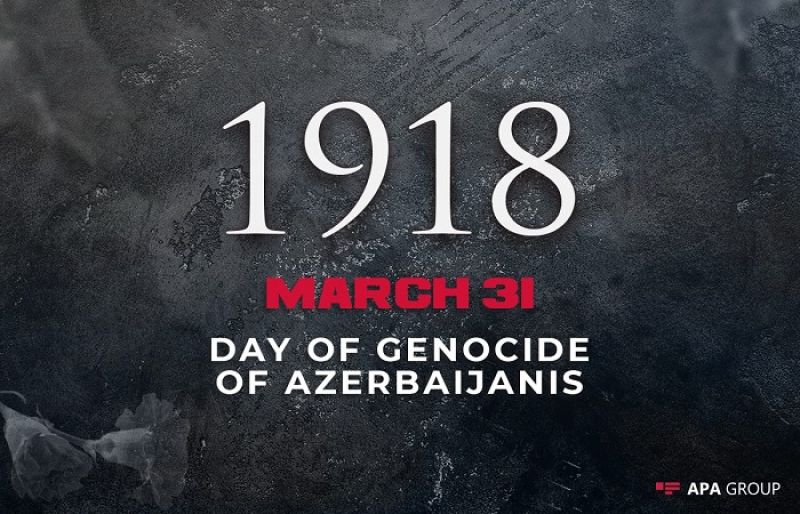105 years have passed since the genocide committed against Azerbaijanis by Armenian Dashnaks together with Bolsheviks, APA reports.
The mass massacres that began in Baku on the night of March 30, 1918 resulted in the murder of nearly 20,000 innocent people, including a large number of elderly, women and children.
During the massacre that lasted from March 30 until April 2, Armenian Bolsheviks led by Stepan Shaumian killed thousands of people, burnt Muslim shrines, and confiscated the 400-million-manat estate of Baku residents.
During the mass massacres, the most magnificent mosque of the city Tazapir mosque was subjected to incessant cannon fire, Armenians burned the “Ismailiyya” building, one of the most magnificent architectural pearls of Baku.
The policy of genocide against Azerbaijanis was not limited to only Baku. On March 31, Armenian Dashnaks killed 8,027 Azerbaijanis, including 2,560 women and 1,277 children in 53 villages in the Shamakhi region.
The number of innocent Azerbaijanis killed in 162 villages of Guba was more than 16 thousand. Armenian Dashnaks burned thousands of villages in Lankaran, Mughan region and Karabakh and brutally murdered tens of thousands of people.
The Special Investigation Commission, set by the Azerbaijani Democratic Republic on 15 July 1918, collected plenty of documents and submitted them to the government. In 1919, the Parliament of Azerbaijan adopted a decision to mark March 31 as the Day of the Genocide of Azerbaijanis.
Though this bloody day was forgotten during the Soviet period, a series of investigations were carried out into the crimes committed on 31 March 1918, and numerous books were published after Azerbaijan gained its independence.
President Heydar Aliyev signed a decree on 26 March 1998 to declare March 31 as the ‘Day of Genocide of Azerbaijanis’.
Events, commemorative ceremonies, and conferences are held in various countries of the world on this occasion.

